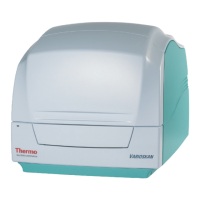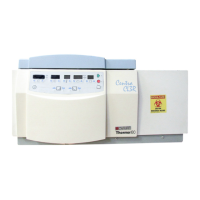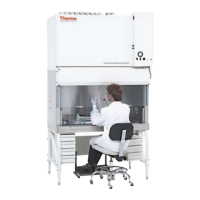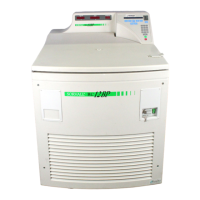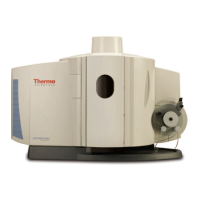3
Vacuum System
API Source Interface
Thermo Scientific Orbitrap Fusion Series Hardware Manual 25
atmospheric pressure region and transports them to the API source interface region of the
vacuum manifold. The mass spectrometer applies the same electrical potential (positive for
positive ions and negative for negative ions) to the ion transfer tube and the RF lens, which
assists in transporting the ions from the tube to the RF lens. When you remove the ion
transfer tube (after it has cooled to room temperature), the vent prevent ball drops into place
to stop air from entering the vacuum manifold. Therefore, you can remove the ion transfer
tube for cleaning or replacement without venting the system.
Ions from the ion transfer tube pass through the RF lens and then the exit lens (Figure 11).
The RF lens is an ion transmission device consisting of progressively spaced, stainless-steel
electrodes. The RF lens differs slightly between the Orbitrap Fusion Lumos MS and the
Orbitrap Fusion MS. The mass spectrometer applies an RF voltage to the electrodes, and
adjacent electrodes have voltages of opposite phase. As the RF amplitude increases, ions of
progressively higher mass-to-charge ratios pass through to the exit lens and move toward the
MP00 RF lens. The exit lens acts as a vacuum baffle between the higher pressure API source
interface region and the lower pressure MP00 RF lens region of the vacuum manifold. The
RF lens and exit lens mount to the API source interface cage.
Figure 11. Exit lens and RF lens (Orbitrap Fusion and Orbitrap Fusion Lumos MSs)
Exit lens
RF lens
Orbitrap Fusion MS
Orbitrap Fusion Lumos MS

